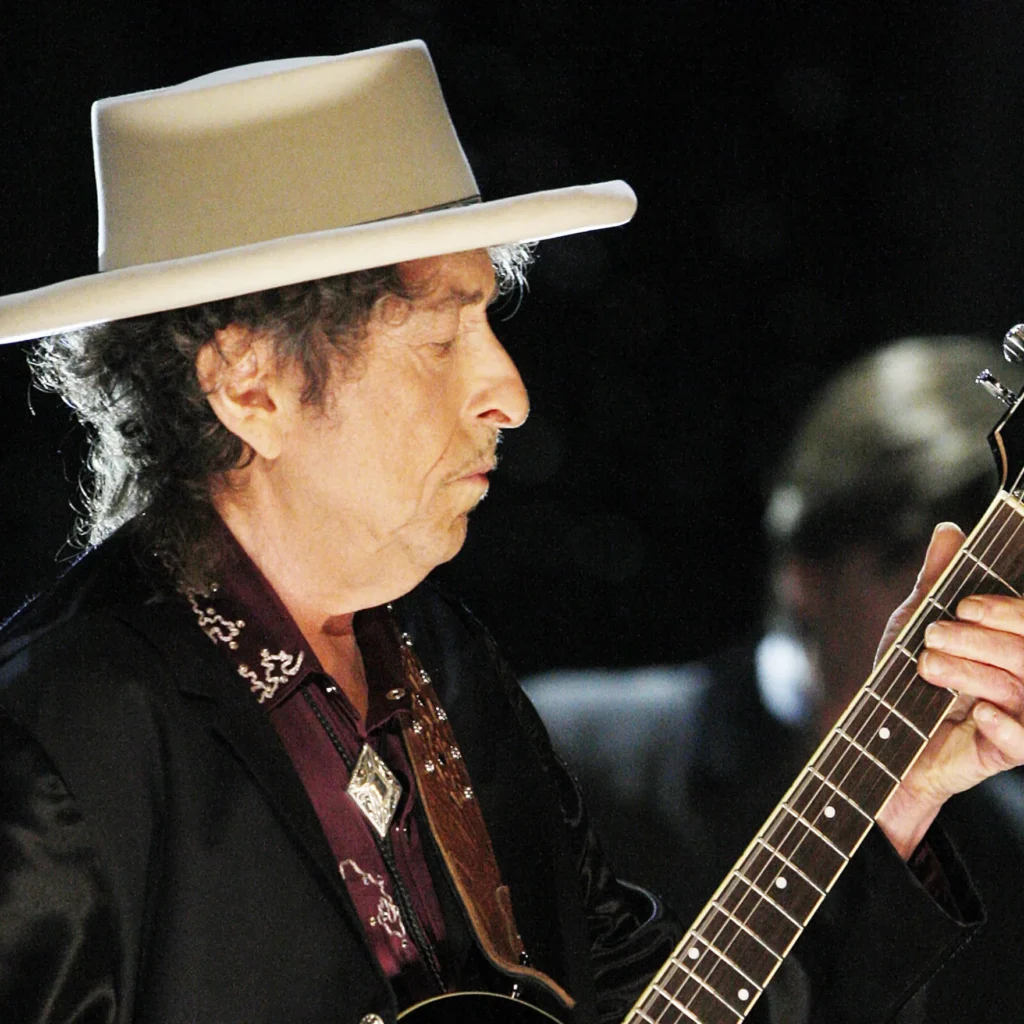I’ve just listened all the way through Bob Dylan’s “Murder Most Foul” for the first time. I’ll move on to the rest of his new album, Rough and Rowdy Ways, this weekend. A musician friend says it’s “heavy and spooky,” and he’s got me eager to hear, “Goodbye Jimmy Reed.” I’ve always taken Dylan in moderate measure, given him plenty of time. For 60 years, he’s been our chief chronicler, and in his long ballad for JFK, the music and mood are stately, elegiac, and emphatic, which feels right both for his subject and for the state of the nation today.
Speaking of Dylan as chronicler, I reviewed his book Chronicles, Volume 1, for Downbeat in 2005. It impressed me with its substantial jazz content (references to Thelonious Monk, Dizzy Gillespie, Cecil Taylor, Charlie Parker, et.al.); his account of the impact an unnamed jazz singer had on getting him out of an artistic rut, a “marathon stunt ride;” and what he had to say about Robert Johnson (“fires of mankind blasting off…a spinning piece of plastic”). He singled out the Delta blues legend again in his New York Times interviewwith Douglas Brinkley on June 12. “Robert was one of the most inventive geniuses of all time. But he probably had no audience to speak of. He was so far ahead of his time that we still haven’t caught up with him. His status today couldn’t be any higher. Yet in his day, his songs must have confused people. It just goes to show you that great people follow their own path.”
Johnson is the subject of two recent books. Up Jumped the Devil: The Real Life of Robert Johnson by Bruce Conforth and Gayle Dean Wardlow, and Brother Robert by Annye C. Anderson with Preston Lauterbach. The former is an exhaustively researched, authoritative biography that chisels away at the legend of Johnson as a bluesman whose greatness was rooted in a Faustian bargain. Mrs. Anderson, a 94-year-old resident of Amherst, MA, and the half-sister of Johnson’s half-sister, Carrie Thompson, tells the personal story of her youthful experience knowing “Brother Robert” as a visitor and occasional occupant of her family’s home in Memphis. Her book brings us only the third known photograph of Johnson, and an equally stunning image of a postcard he wrote in 1937 from Dallas, where he made the second of his two recording sessions.

In “Murder Most Foul,” Dylan sings, “Take me back to Tulsa to the scene of the crime.” I wonder how many listeners got the reference before last week’s news brought attention to the massacre and burning of the African American community (“Black Wall Street”) there in 1921? 100-year-old Hal “Cornbread” Singer is the last living jazz artist who lived through the Tulsa massacre. Born in 1919, the tenor saxophonist worked with numerous big bands including Duke Ellington’s, and scored a jump blues hit in 1951 with “Cornbread.” He’s lived in France since 1965. Click here for a June 19 Washington Post feature on his Tulsa background. Here’s footage of Singer a decade ago celebrating his 90th birthday.
Dylan pairs Beethoven and the blues harmonica master Little Walter (“king on the harp”) in a couplet connecting the “Moonlight Sonata” and Walter’s “Key to the Highway.” Among several references to Dallas, he cites “Deep Ellum,” a historic term for the Elm Street thoroughfare that runs through the city’s predominately African American business and residential district. I read it as a tribute to the unnamed Blind Lemon Jefferson, the popular, pioneering bluesman who played the streets of Dallas in the 1920s.
There’s a litany of jazz legends in “Murder Most Foul,” including Thelonious Monk, whom he related having had a humorous exchange about “folk music” with in Chronicles. But what I’m most moved by is the way he hails one of Monk’s friends and compatriots as “the great Bud Powell.” It was just yesterday that I heard via Facebook an amazing performance by Powell for the first time. “Big Band Blues,” most likely recorded in 1953 in Washington, D.C., finds Powell not only in brilliant form, but it’s most likely the only time the pianist was heard with a big band outside of his early work with the Cootie Williams Orchestra.
In the wake of George Floyd’s killing by Minneapolis police on May 25, renewed attention has been paid to the bloody beating by a New York City policeman that Miles Davis sustained outside Birdland in 1959. The attack on Miles, who was headlining the club named for Charlie Parker (Bird is also referenced by Dylan in MMF), drew press coverage at the time. But not so the brutal beating about the head that Powell was subjected to by Philadelphia police around 1944, when the pianist was 19. That’s a crime that not only went uninvestigated, but one that resulted in severe harm to Powell’s mental health for the rest of his 40-year-long life. By my reading, Powell is the only person whose name is preceded by a superlative in “Murder Most Foul.” I think I’ve said it the exact same way as Dylan throughout my radio career, “The great Bud Powell.” There’s really no other way.
Dylan’s grouping of The Beatles and the Merseybeat took me back to the closest experience I ever had with Beatlemania. On a trip to New York with my family in April 1965, we stayed at the Americana Hotel on Seventh Avenue, and much to our delight, and my father’s chagrin, Gerry and the Pacemakers were staying there too. “Ferry Cross the Mersey” was a huge hit at the time and the group was in New York for an appearance that Sunday night on Ed Sullivan. All weekend long, the hotel lobby and main entrance were mobbed with screaming teens, and as an 11-year-old visitor from Worcester, still a couple years away from seeing Duke Ellington and the entry of jazz in my life, I felt like I was at the center of the universe.
